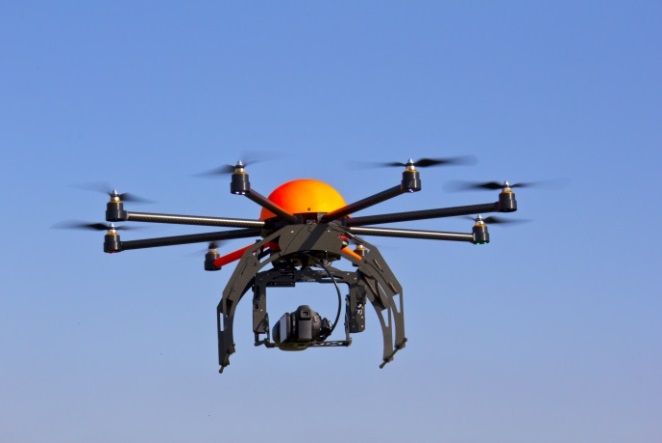The dangers behind Amazon’s newest drone delivery service
12/04/2015 / By Chris Draper

Drones — despite much flak from the public — are now the new stars of Amazon’s latest service offering. The cloud computing company just released a delivery drone prototype over the weekend, with the intention of using it to deliver items to urban areas. While the mainstream media has adulated the company’s CEO Jeff Bezos as a genius, in actuality, using drones as an alternative delivery service is so stupid it practically drools.
If we are to believe recent media reports, drones will be part of Amazon’s Prime Air delivery service in the near future. According to details provided by Amazon, the drone recently debuted weighs 55 pounds and can carry packages of up to five pounds. The drone flies under 400 feet and will use a “sense and avoid” technology to circumnavigate around various obstacles along its path.[1]
“We are testing many different vehicle designs and delivery mechanisms to discover how best to deliver packages in a variety of environments,” said Amazon in a press release. “We have more than a dozen prototypes that we’ve developed in our research and development labs. The look and characteristics of the vehicles will evolve over time.”[1]
Reach for the sky
A video released by Amazon shows the drone rising vertically like a helicopter to almost 400 feet. A message is displayed on a customer’s tablet to alert them that the item is close to its destination. The drone then scans the landscape, lowers itself to the ground, drops off the package and flies back up vertically. The drone can be seen in action in the video below.
The use of drones in the U.S. hinges upon regulatory approvals. In comparison to other countries, the U.S. is stricter about drone regulations. According to the Associated Press, in 2014 alone, European countries have granted more than 1,000 commercial permits to drone users for inspections and photography.[2]
In addition, Japan has also been using unmanned aerial vehicles to spray crops for more than ten years now. And just last year, Canada enlarged its drone regulations to permit the flights of drones weighing 55 pounds, so long as they abide by other restrictions. So, if you hear Amazon say it’s already ready to use drones as a means of delivery, what the company really means is they are ready to use drones — in Canada.[2]
According to MIT Professor Nicholas Roy, who worked on Google’s drone technology, “There are issues and constraints that may allow other countries to overtake the U.S. both in developing the next generation of UAV (unmanned aerial vehicle) technology and in training the next generation of UAV engineers.”[2]
The shortcomings of Prime Air
While using drones as a means to deliver goods sounds promising in theory, there are a number of glitches with the technology which Amazon has, so far, failed to address. To begin with, Amazon claims the drones will be targeted towards customers in urban areas, which are usually dense with people and apartment complexes. Using a drone to deliver an item outside a ten-storey apartment complex isn’t the same as landing in a customer’s backyard, as portrayed in Amazon’s video.[3]
Furthermore, using drones to make deliveries makes the skies — which are already littered with a blizzard of flying objects — even more dangerous. If the FAA approves this technology, other companies will follow in the footsteps of Amazon’s Prime Air. Just imagine the chaos: There could be hundreds of thousands of deliveries made each day.[3]
These drones could fly into other manned and unmanned vehicles. A crash would most likely occur over a highly populated area, which increases the risk of harming civilians on the ground. What happens if a technical glitch occurs, causing the drone to veer off course and plunge into traffic?[3]
Drones will also be susceptible to attacks, whether it be from a group of teenagers playing with a shotgun or a farmer defending his or her private property. With the number of repairs and lawsuits abound, this technology would be a much greater economic risk than traditional delivery servicemen.[3]
Lastly, drones will most likely be subject to cyber attacks. Lowly freelance hackers, terrorists or international governments could veer Amazon’s drones off course and cause them to deliver a cocktail of lethal chemicals over a populated area. While, of course, there will be safety measures in place to prevent this from happening, no defense mechanism is airtight. It takes just one computer savvy hacker to figure out a way to use our technology against us.
The FAA is already beginning to allow companies to operate drones in the United States. When it comes to being an effective means of delivery, however, drones are no more secure than Amazon’s cloud.
Sources include:
[1] USAToday.com
[2] Inc.com
[3] PhillyMag.com
Tagged Under: Amazon, Amazon Prime Air, drone delivery service, drones, Jeff Bezos


















